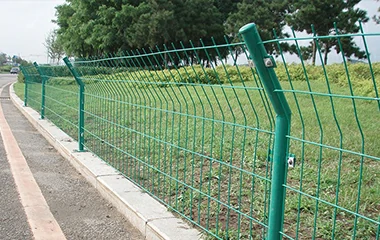 TEL:
+86-13102802206
TEL:
+86-13102802206
 Email:
fencenetting@china.com
Email:
fencenetting@china.com
 Language
Language
 TEL:
+86-13102802206
TEL:
+86-13102802206
 Email:
fencenetting@china.com
Email:
fencenetting@china.com
 Language
Language


The Versatility and Strength of 304 Stainless Steel Wire
When it comes to materials that combine strength, durability, and resistance to corrosion, 304 stainless steel wire stands out in a wide array of applications. Known for its remarkable properties, this type of wire is commonly used in various industries, from construction to manufacturing, making it an essential material in modern engineering.
Composition and Properties
304 stainless steel is an austenitic stainless steel that is composed primarily of iron, with significant amounts of chromium (18%) and nickel (8%). This specific composition grants it remarkable corrosion resistance, making it particularly well-suited for environments that are prone to oxidation and rust. The presence of nickel also enhances its formability and weldability, allowing it to be easily shaped and joined with other materials.
One of the defining characteristics of 304 stainless steel wire is its ability to withstand high temperatures. With a melting point of around 1400 to 1450 degrees Celsius, this wire can maintain its integrity in extreme conditions. Furthermore, this steel exhibits excellent tensile strength, making it ideal for applications that require reliability under stress.
Applications
The versatility of 304 stainless steel wire allows it to be used in a multitude of applications. In the construction industry, it often serves as reinforcement in concrete structures. Architects and engineers appreciate its strength-to-weight ratio, as it enhances structural integrity without adding excessive weight. Additionally, the wire is frequently used in the manufacturing of cables and springs, where durability and flexibility are critical.

In the food processing industry, 304 stainless steel wire is a popular choice due to its non-reactive nature. It is often employed in the creation of baskets, trays, and conveyor belts that come into direct contact with food products. The wire’s ability to resist corrosion and staining is essential for maintaining hygiene and complying with safety regulations.
Another notable application is in the creation of decorative items. The aesthetic appeal of 304 stainless steel wire, along with its ability to be polished and finished to a high sheen, makes it a favorite among artisans and designers. From jewelry to furniture accents, the wire can be crafted into intricate designs that are both beautiful and resilient.
Environmental Considerations
In today’s world, sustainability is a significant factor in material selection. 304 stainless steel wire contributes positively to environmental considerations due to its recyclability. Stainless steel can be recycled multiple times without losing its mechanical properties, making it an eco-friendly choice compared to other materials that may degrade over time.
Conclusion
In summary, 304 stainless steel wire is a remarkable material that combines strength, versatility, and aesthetic appeal. Its unique properties make it suitable for a wide range of applications across various industries, from construction and manufacturing to food processing and decorative arts. With the added benefit of being environmentally friendly due to its recyclability, 304 stainless steel wire is not only a practical choice but also a responsible one. As technology and design continue to evolve, the demand for this exceptional material is expected to grow, solidifying its role as a cornerstone in modern manufacturing and architecture.